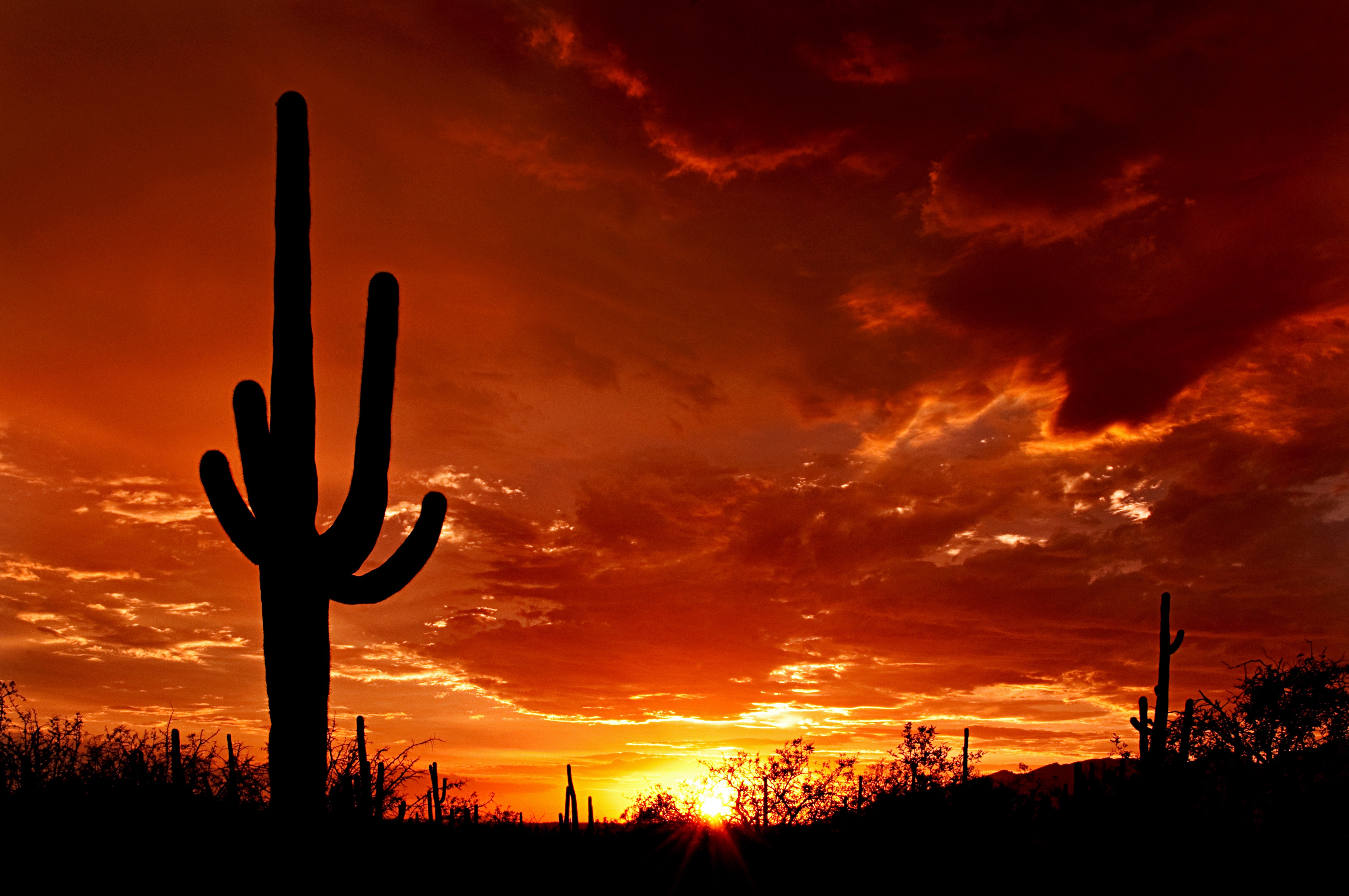
I live in the desert near the Superstition Mountains, east of Phoenix, Arizona. Not far from my house is a gorgeous Saguaro cactus that I drive by daily. I’ll be honest: I had no clue how big those things were until I stood beside one and looked up! This particular monster has eight arms growing from its 60-foot-tall body.
A Saguaro doesn’t even get its first arm until it’s at least 75 years old, and it can live for 200 years or longer. Judging by its splendor, this guy has been around long enough to see European settlement in the Valley of the Sun grow from a few buildings along the Salt River into a sprawling metropolis of 4.6 million people spanning 9,000 square miles.
The Sonoran Desert is the only place on Earth where Saguaros grow. That’s because the cactus and the desert grew up together. As the climate around here became what it is today, plants that fared better survived, reproduced, and passed along their genes. Less successful plants didn’t. Generation after generation, as the climate changed, the Saguaro evolved to keep up.But wait a minute! Why is this a desert at all? That has a lot to do with the physics of water and convection. Sunlight heats the tropics, driving planetwide convection that carries much of that thermal energy toward the poles. As warm, moist tropical air rises, it also cools, dumping much of its moisture as rain. As water vapor condenses, it releases heat. By the time that once-moist tropical air completes its upward path, it is both dry and a lot warmer than it might have been.What goes up must come down. As convection carries that air back to lower altitudes, it compresses, turning already relatively warm, dry air into a veritable blast furnace. Welcome to the horse latitudes, latitudes around 30° along which many of the planet’s deserts are located.Now we have to worry about Earth’s rotation. As convection carries air north and south, the Coriolis effect diverts that air into strong bands of easterly and westerly winds and the powerful jet streams that carry weather systems west to east around the planet.Earth’s rotation is ultimately a consequence of the rotation of the interstellar cloud from which the Sun and solar system formed. We might not think about it very often, but weather patterns on Earth bear the fingerprints of how gas swirled about in interstellar space 4.5 billion years ago.And then there’s the star that formed at the center of that rotating, collapsing interstellar cloud. Nuclear reactions in the Sun’s core power the whole show of climate and life.Anyway, there is a nice jet stream drawing moist air from the Pacific eastward toward the Sonoran Desert. So why is it still dry? The culprits this time are the mountains that surround it. When moist air flows into the side of a mountain, it moves upward. And just like what happens in the tropics, rising air loses its moisture as precipitation and is heated by condensation. When that now dry and relatively warm air comes flowing down the backside of the mountain, well, there’s that blast furnace again!If you want to know about that cactus I smile at when I drive by, you have to know about mountains. That gets us into the forces that shape Earth’s surface. Convection of hot, viscous rock in our planet’s interior carries heat outward from the center toward the surface. The scum floating on top, otherwise known as the crust, gets shoved around by those convection currents. Tectonic plates crash together, forcing mountains skyward. Friction near plate boundaries heats rock that ultimately reaches the surface, building towering volcanoes.By the way, the energy powering that convection comes from the radioactive decay of atomic nuclei that were synthesized in the hearts of stars that lived and died long before the Sun and Earth formed. The same can be said for the carbon, nitrogen, and every other chemical element apart from hydrogen that makes up my friend the Saguaro.And so the story goes. If you really want to know about that cactus, ask biologists studying evolution. Ask oceanographers or climate scientists. Ask geologists or planetary scientists. Ask astrophysicists studying the life cycles of stars. Ask cosmologists studying the origin and evolution of the universe. Ask particle physicists who are grappling with the nature of the dark matter, without which our galaxy would have never formed.There is a gorgeous Saguaro cactus near my house. If you really want to know about it, you kind of have to talk to everybody. To really understand that cactus is to understand the universe.









